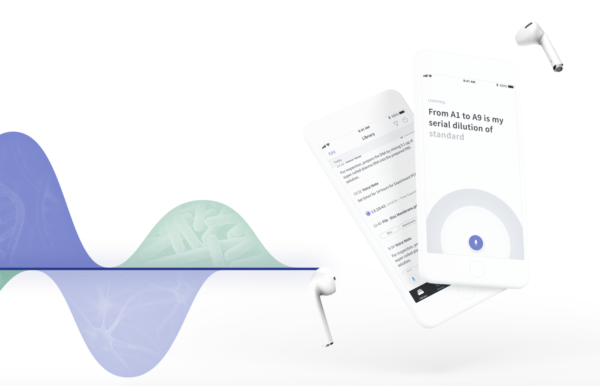
The manual administrative tasks required of laboratory scientists – such as careful documentation of protocol adjustments – can be difficult to perform while using equipment or looking through a microscope at a sample.
This has the potential to lead to fragmented data streams where information lost in translation can create costly experimental errors. Berlin-based startup LabTwin is positioning its voice-powered digital lab assistant as one potential solution.

With the Rise of AI, What IP Disputes in Healthcare Are Likely to Emerge?
Munck Wilson Mandala Partner Greg Howison shared his perspective on some of the legal ramifications around AI, IP, connected devices and the data they generate, in response to emailed questions.
Founded last year with the backing of BCG Digital Ventures and German biopharma supplier Sartorius, the 35-person company claims it can improve research efficiency with a system that captures information in real-time, rather than after the fact.
“The friction we’re trying to solve is to provide software that makes scientific work automatically reproducible,” LabTwin CEO Magdalena Paluch said. “We want to change the culture so that people don’t have to go to their desk at the end of the day and spend time trying to remember what happened to document it.”
LabTwin’s platform can collect data, access information and help manage experiments, streamlining many of the burdensome processes associated with laboratory work.
Scientists can interact with LabTwin’s digital assistant through a mobile application or a web-based interface. A personalized wake word is used to activate the technology which can perform a number of research-oriented actions like instructing the user on a specific experimental protocol, annotating or recording changes and measurements or putting lab supplies on a shopping list.
The software can also perform standard digital assistant tasks like setting reminders or timers.
Now, the company’s technology is being bolstered with a new open API that allows the system to link into internal and external data sources like lab equipment and informatics software to boost the capabilities and utility of the digital assistant.
Paluch said a mobile voice-based interface provides a great “connective tissue” for researchers who are often occupied with multiple experiments at the same time.
In developing the technology, the company worked on understanding the scientific workflow to help present information or assistance in a way that is contextually relevant for the life sciences industry.
While consumer digital assistants like Amazon’s Alexa have been repurposed by some scientists for laboratory and research-related tasks, LabTwin pitches their product as being purpose-built for research and trained on specific technical vocabulary.
Paluch added that voice is only one part of the LabTwin’s plan to digitally transform research. The company is working on other multi-modal efforts to help make lab processes smoother and more efficient. One example she laid out were additional visual cues presented on a tablet to help scientists keep track of their progress in a particular experimental protocol.
The company initially started targeting academia as their first customer category, but has branched out to work with pharma companies, particularly in labs that require a hands-free experience such as those handling dangerous chemicals or performing pathogen research. According to Palunch, LabTwin is in hundreds of labs around the world.
By creating a standardized data stream for life sciences, LabTwin is also hoping to aid in the increased compliance and privacy security challenges faced by the industry.
Guru Singh, LabTwin’s head of growth, pointed to the platform’s machine learning capabilities as fostering continual improvement as the company continues to gain users.
“Our focus is quite a bit on solving problems faced by scientists and filling in the gaps in their day-to-day workflow,” Singh said. “It’s more about humanizing technology, so that rather than creating a separation, it’s empowering them to do more.”
Photo: LabTwin














